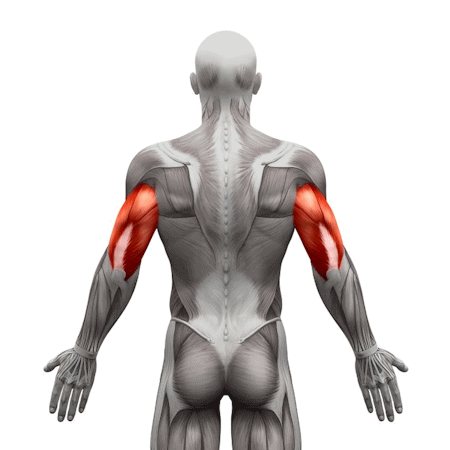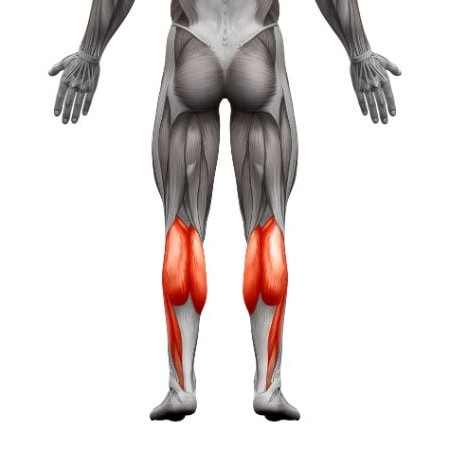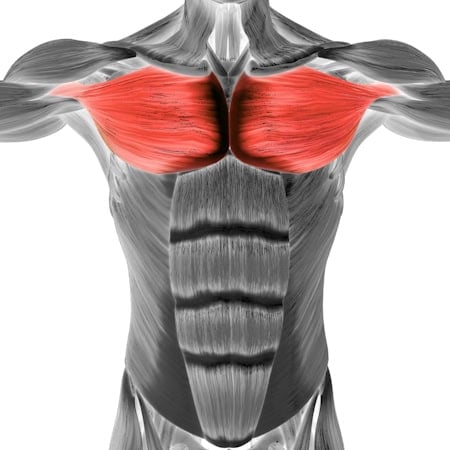Burpee
How to do Burpee?
The Burpee (Chest-to-Ground Variation) is a dynamic full-body calisthenics exercise that combines strength, cardio, coordination, and explosive power into a single high-intensity movement. This variation includes a full chest-to-floor push-up followed by a jump with arms reaching overhead, making it more physically demanding than easier burpee variations. It’s a favorite in functional training, CrossFit, and calisthenics conditioning due to its ability to elevate the heart rate quickly while engaging multiple muscle groups.
The movement flows through a squat, plank, push-up, jump, and reach, training nearly every major muscle group while building endurance, power, and mental toughness. Whether you’re looking to burn fat, improve athletic conditioning, or build full-body strength, the chest-to-ground burpee is an effective and scalable choice.
No equipment is needed, just enough space to lie flat and jump vertically. That makes this variation perfect for home workouts, outdoor training, or travel routines. While there are no strict prerequisites, beginners should be comfortable with basic push-ups and squatting mechanics, and may modify reps or tempo as needed.
How to Perform a Burpee
1. Starting Position
• Stand tall with feet hip- to shoulder-width apart, arms relaxed by your sides.
• Engage your core and keep your weight balanced through your midfoot.
2. Squat and Plank Transition
• Drop into a squat position, place your hands on the ground just in front of your feet.
• Kick your feet back behind you into a high plank position.
3. Chest-to-Floor Push-Up
• Lower your chest all the way to the ground—thighs and hips may lightly touch, but the chest must fully contact the floor.
• Press yourself back up to the plank position with control.
4. Return to Squat and Jump
• Jump or step your feet forward to return to the low squat position.
• Explosively jump upward, fully extending the hips and bringing your arms overhead.
• Land softly with knees slightly bent and immediately begin the next rep if doing multiple in sequence.
5. Breathing Pattern
• Inhale as you lower to the ground.
• Exhale as you push up and jump.
• Try to maintain a steady rhythm in high-rep sets.
6. Repetitions and Sets
• Perform 3 to 5 sets of 6 to 15 reps, depending on your conditioning goals.
• In HIIT workouts, aim for 30–45 seconds of continuous effort per set.
Benefits of the Burpee (Chest-to-Ground)
• Full-Body Strength and Conditioning – Trains legs, chest, shoulders, core, arms, and glutes in one move.
• High-Calorie Burn – Ideal for fat loss and metabolic conditioning due to its intensity and total-body engagement.
• Improves Explosiveness – The jump and push-up combo builds power in both upper and lower body.
• Boosts Cardiovascular Fitness – Quickly raises heart rate and builds aerobic + anaerobic capacity.
• Enhances Athletic Coordination – Syncing multiple movement phases improves agility and body awareness.
• Requires No Equipment – A true “anytime, anywhere” exercise for maximum versatility.
Common Mistakes to Avoid
• Not Touching the Chest to the Ground – This variation requires full chest contact, not just dropping the hips.
• Skipping the Jump or Reach – Jump with intent and fully extend your arms overhead, don’t shortcut the final phase.
• Sagging Hips in the Push-Up – Maintain a strong plank form to protect your lower back.
• Landing Too Hard – Land softly with bent knees to reduce joint impact.
• Lack of Consistency Between Reps – Aim for a smooth, rhythmic flow without compromising form.
Similar Exercises
If you’re training in a gym and want to replicate the movement or break it down into components, consider:
• Push-Up + Jump Squat Combo – Perform reps of each individually.
• Burpee to Box Jump – Adds even more explosiveness to the jump phase.
• Mountain Climber + Jumping Jack – Simulates the cardio and coordination aspects.
• Rowing Machine Intervals + Push-Ups – Mimic the conditioning and strength demands with equipment.
• Kettlebell Swings + Plyo Push-Ups – Replace the burpee with two intense full-body gym exercises.
Tips for the proper execution of Burpee
Keep your core tight during the plank and push-up to protect your back.
Land softly with bent knees to absorb shock during the jump.
Exhale during the jump to maintain rhythm and breathing control.
Warm up your wrists and shoulders—burpees place repeated impact on them.
Set a tempo or use a timer to pace your reps and avoid burnout too early.
Scale volume appropriately—burpees are deceptively demanding and fatigue builds fast.
Muscles worked when doing Burpee
Primary Muscles
•Quadriceps & Hamstrings – Drive the squat and jump.
•Pectorals (Chest) – Heavily engaged during the push-up phase.
•Deltoids – Control the arm swing and support the push-up and overhead reach.
•Core (Rectus Abdominis & Obliques) – Stabilize the body in all phases.
•Gluteus Maximus – Powers the jump and squat phases.
Secondary Muscles
•Triceps – Support the push-up portion.
•Calves – Engage during the jump and foot transitions.
•Forearms & Grip – Stabilize hand contact with the ground.
•Lower Back (Erector Spinae) – Supports proper posture during transitions.
Primary Muscle(s):
Secondary Muscle(s):

Triceps

Calf
Equipment needed for Burpee
No equipment needed for this exercise.
Adjust the difficulty of Burpee
The Chest-to-Ground Burpee is endlessly scalable. Whether you’re a beginner focusing on form with step-backs and no jumps, or an advanced athlete cranking out explosive tuck-jump burpees in a HIIT circuit, this variation delivers serious results. It allows for easy intensity adjustments, and its combination of strength, speed, and conditioning makes it ideal for fat loss, endurance, or athletic training. Few bodyweight movements pack as much into a single rep as this one.
How to make Burpee harder?
How to make Burpee easier?
How to make Burpee harder?
To make Burpee harder:
-
Add a Tuck Jump at the Top – Bring knees to chest mid-air.
-
Use a Weighted Vest – Increases resistance without compromising form.
-
Perform a Strict Push-Up or Clap Push-Up – Make the floor phase more explosive.
-
Add a Second Jump or a Broad Jump – Increases intensity and coordination.
-
Increase Tempo or Reps – Perform burpees as fast as possible while maintaining form.
How to make Burpee easier?
To make Burpee easier:
-
Step Back and Forward Instead of Jumping – Reduce impact and intensity.
-
Elevate Hands on a Box – Lightens the push-up phase and reduces strain.
-
Skip the Push-Up – Perform a plank hold instead of lowering to the ground.
-
Skip the Jump – Finish standing tall without jumping if needed.
-
Slow Down the Pace – Focus on quality movement over speed.




